PROVINCETOWN — As he trekked across the dunes with half of the fifth-grade class from the Provincetown IB Schools, Mark Adams slowed the pace for a moment to call attention to the ephemeral nature of the Province Lands.
“Everything here is an expression of the wind,” he said. “This is a frozen wave of sand we’re standing on.”
The artist, biologist, and retired Park Service cartographer was with the students on Sept. 25, changeover day of the school’s annual three-day science and history adventure. The rest of their class had stayed overnight in Ray Wells’s dune shack, and now it was this group’s turn.
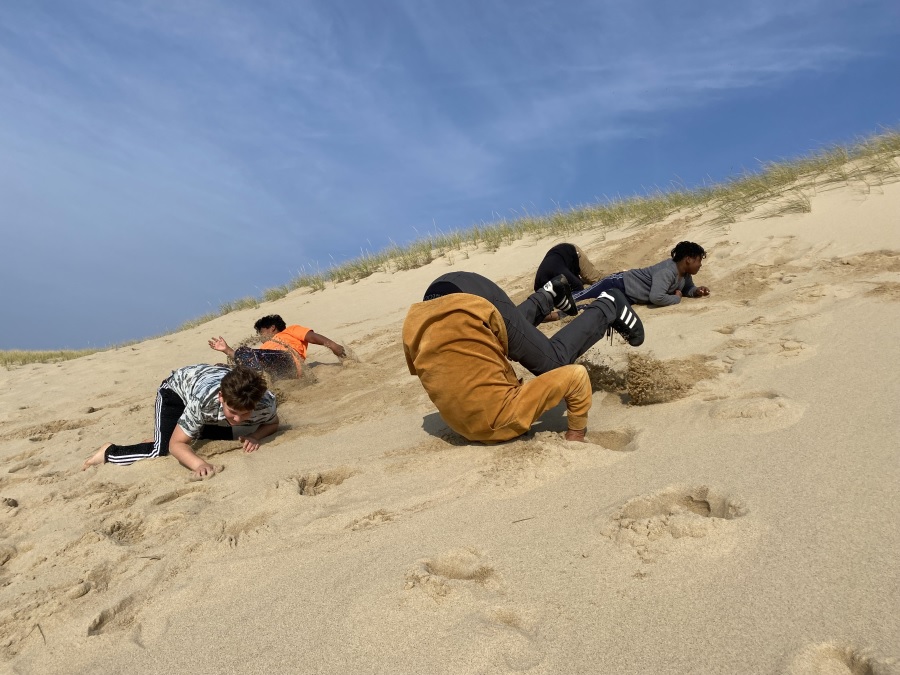
Looking down a sandy slope at a stand of pitch pines half-buried by a dune, fifth grader Javi Ganis was struck by how small the pines seemed. “So, the trees are really short?” he asked.
“The trees are still tall,” Adams said. “They’re just covered by sand.”
“That’s really cool, actually,” said Javi.
“It’s kind of like a desert,” said Daequan Channer as he looked over the vast stretch of dunes. “It’s just beautiful.”
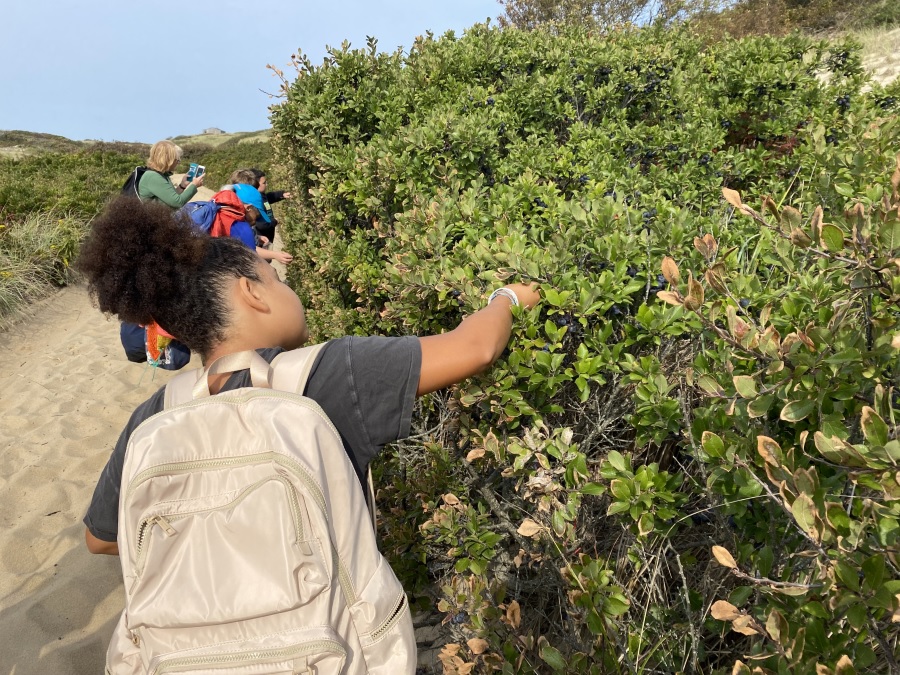
While the kids seemed to find every aspect of the dunes interesting, they were especially keen on studying what it felt like to roll down them. Adams agreed that sounded worth discovering.
Partway to the dune shacks, the students took another break, this one at a bog to pick cranberries. Nancy Flasher, the field studies coordinator for the school, encouraged the kids to dig next to the bog and see what they found.

Before long, Estella Boulin announced that she’d found a root. “Keep digging,” Flasher said.
“It’s getting wet,” Daequan said. Before long, he yelled out, “Water! I found water!”
“Aquifer!” Aiden Porter shouted.
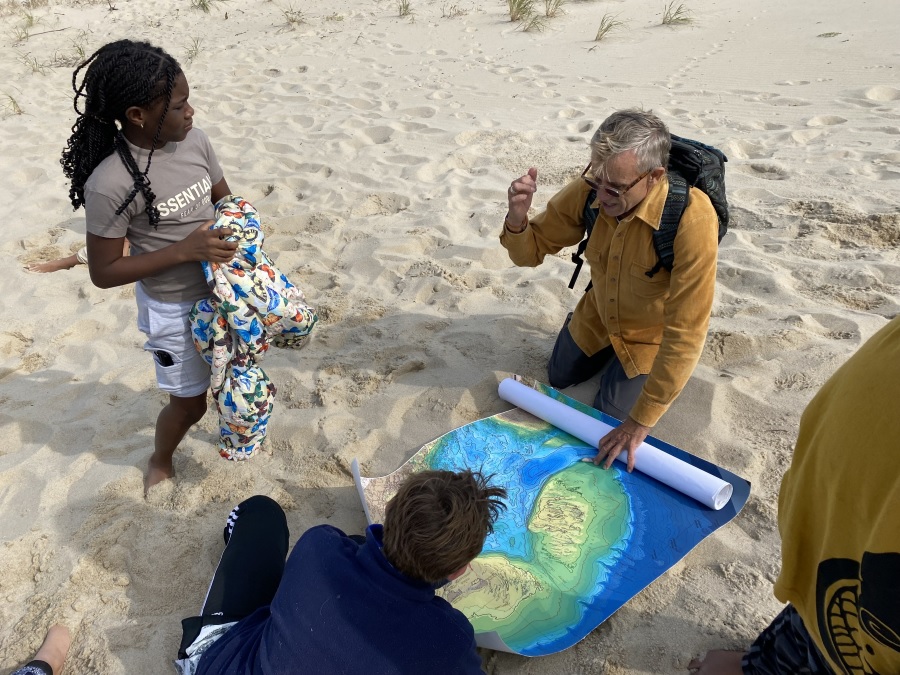
Flasher and Adams used this opportunity to explain that this aquifer is the source of much of Provincetown’s drinking water. Being out in the dunes, Flasher said, is where students not only develop an understanding of where their water comes from but also learn to value it. “We really want that next generation of stewards,” she said.
When the group reached Ray Wells’s shack, the rest of their classmates were full of stories about playing in the sand, watching seals, and enjoying the sunset.
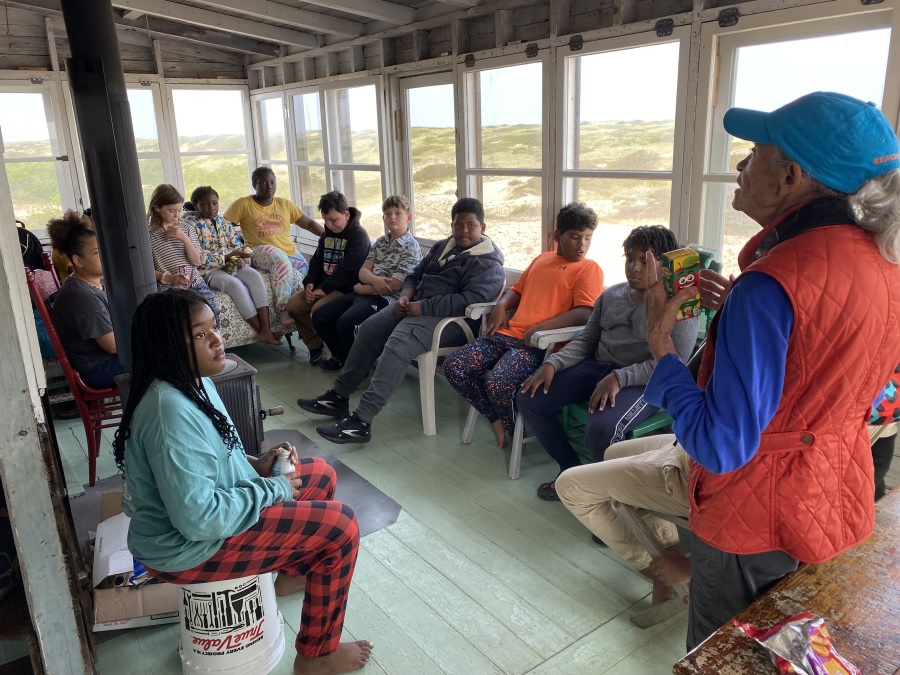
The whole group then gathered on the enclosed porch for a class led by Peaked Hill Trust board member Genevieve Martin. These students were lucky, she said: “People who’ve lived 20 years in town don’t get to see the inside of the shacks.”
The class covered a range of topics: the dune shacks themselves, how ice used to be made, seal biology, seabird conservation, and indigenous history. The kids listened closely. “They love learning,” said fifth-grade teacher Stephanie Thyer. “They’re like sponges.”
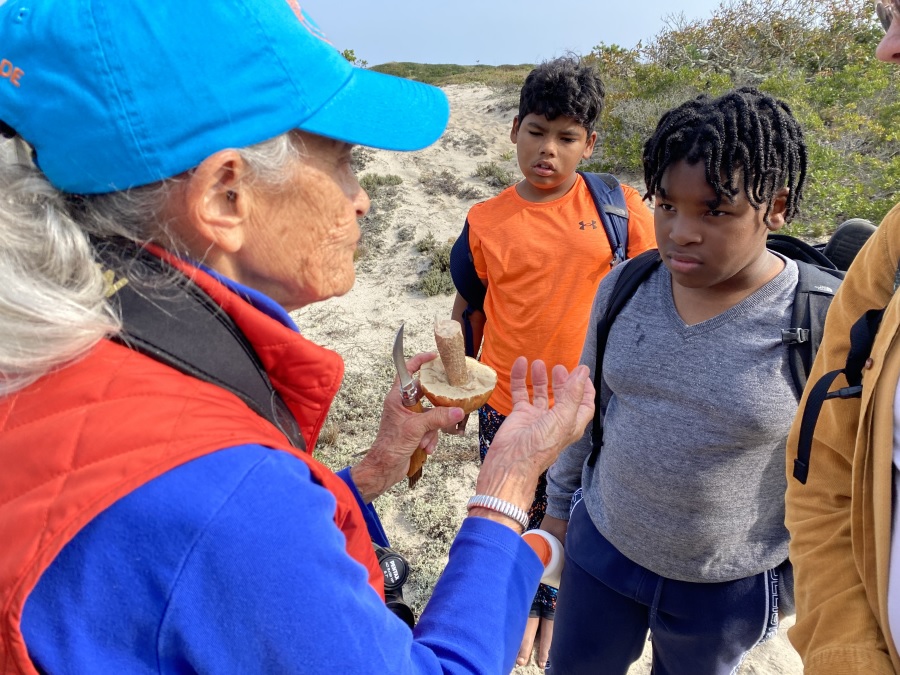
Afterward, the class split into two groups. One went mapping with Adams, and the other half picked up trash on the beach with Martin. Along the way, both groups foraged for beach plums and rose hips.
The rose hips struck a chord with Shania Marriott: “This tastes like a Jamaican snack!” She soon went back for more.
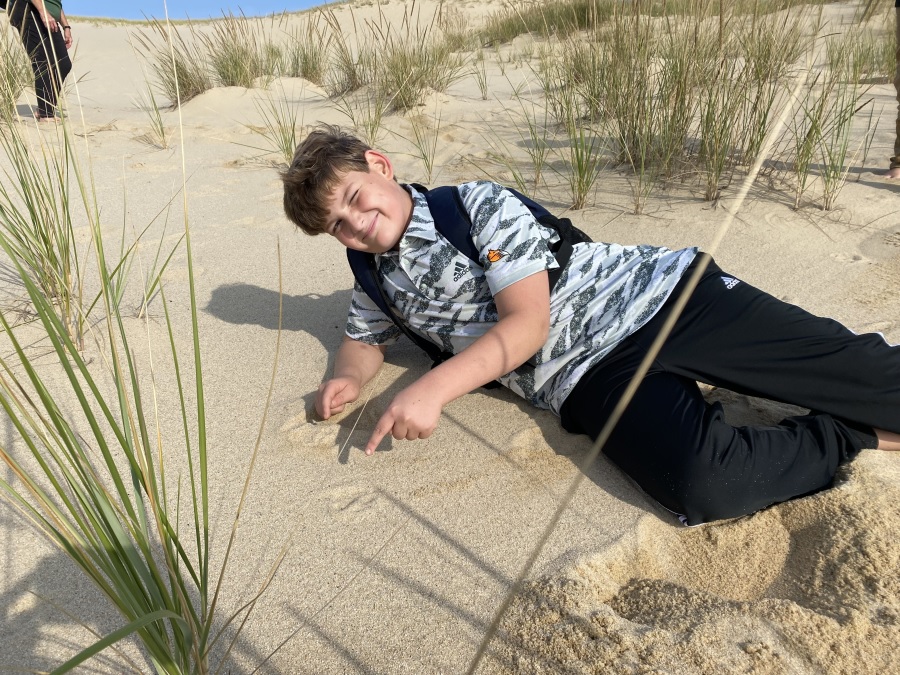
When asked what their favorite parts of the trip were, each student had a different answer.
“Playing in the sand,” Shania said.
“Not being on my phone for two days,” Joda Buchanan said.
“Rolling down all the sand dunes,” Zennea Plummer said. “Even though my hair gets dirty, it’s really fun.”
The group that had to leave that night were sad to go, but those who had just arrived were excited. Aiden, for one, was keen to spend a night in nature and to take some time away from home.
“Feels like it’s going to be fun,” he said.



